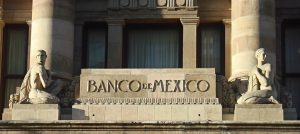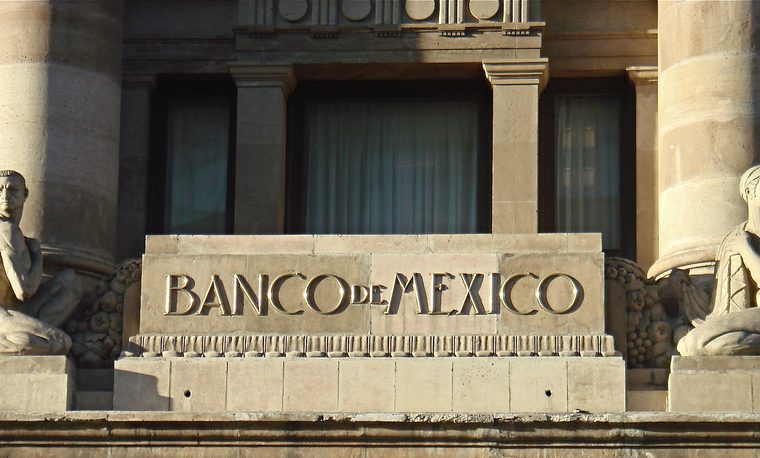 During the fourth quarter of 2018, the world economy seems to have grown at a rate lower than during the first half of the year and with differences among regions and countries. In the United States, although economic activity moderated its rate of growth, it continues to expand at rates above those of the Eurozone, Japan and the United Kingdom. In this environment, world inflation has eased albeit with significant differences among countries. As expected, in December, the Federal Reserve raised the target range for the federal funds rate, although signaling that it expects the pace of normalization of its monetary policy stance to be more gradual than as previously announced. For the medium term, global economic activity is foreseen to expand at a moderate rate and will be subject to the risks of an escalation of trade disputes and of a tightening of global financial conditions, although the latter has declined recently. World economic activity could also be affected by oil price volatility and by several political and geopolitical factors. International financial markets have exhibited high volatility, and the prices of emerging market assets have deteriorated somewhat, although in the last days they have exhibited some improvement.
During the fourth quarter of 2018, the world economy seems to have grown at a rate lower than during the first half of the year and with differences among regions and countries. In the United States, although economic activity moderated its rate of growth, it continues to expand at rates above those of the Eurozone, Japan and the United Kingdom. In this environment, world inflation has eased albeit with significant differences among countries. As expected, in December, the Federal Reserve raised the target range for the federal funds rate, although signaling that it expects the pace of normalization of its monetary policy stance to be more gradual than as previously announced. For the medium term, global economic activity is foreseen to expand at a moderate rate and will be subject to the risks of an escalation of trade disputes and of a tightening of global financial conditions, although the latter has declined recently. World economic activity could also be affected by oil price volatility and by several political and geopolitical factors. International financial markets have exhibited high volatility, and the prices of emerging market assets have deteriorated somewhat, although in the last days they have exhibited some improvement.
Since the last monetary policy decision, the prices of financial assets in Mexico continued to exhibit high volatility. In addition to the aforementioned external factors, the Mexican peso exchange rate continued to reflect the uncertainty regarding the policies of the new administration. Additionally, sovereign risk premia and interest rates for the medium and long terms in Mexico showed sizeable increases, which have partially reverted but still remain at high levels. In this regard, conditions in fixed-income markets must be such that they contribute to an orderly adjustment of the economy. Moreover, the current environment poses significant risks in the medium and long terms that could affect the country’s macroeconomic conditions, its potential growth, and the economy’s price formation process. In this regard, it is particularly important that, in addition to following a prudent and robust monetary policy, measures to foster an environment of confidence and certainty for investment and higher productivity are adopted, public finances are consolidated sustainably, and both transparency and accountability are strengthened. In this context, it is particularly relevant that the fiscal goals included in the Economic Package for 2019 presented to the lower house of Congress, which are based on a prudent macroeconomic scenario for the Mexican economy and have had a favorable impact on domestic financial markets, are attained.
During the fourth quarter of 2018, economic activity is expected to have decelerated as compared to the rebound observed in the third quarter. Thus, slack conditions in the economy are estimated to have remained relatively less tight than at the beginning of the year. The balance of risks to growth continues biased to the downside and has deteriorated.
Inflation fell from 4.90% in October to 4.72% in November, with both its core and non-core components declining. During such period, non-core inflation fell from 8.50 to 8.07%, reflecting lower increments in energy prices. These results were partially offset by higher increases in the prices of certain agricultural
2
goods, keeping non-core inflation at high levels. Likewise, the shocks that have affected non-core
inflation have also influenced core inflation due to the indirect effects they have had on production costs.
The latter, together with other structural factors, has contributed to the high degree of inertia to decline
shown by this subindex. Thus, core inflation decreased from 3.73% in October to 3.63% in November.
Headline inflation expectations for different terms have increased. In particular, those for the end of 2019
rose from 3.71% to 3.89% between October and December, while those for the end of 2020 increased
from 3.50% to 3.79% during the same period. In turn, core inflation expectations for the end of 2019 were
adjusted upwards from 3.45% to 3.50% during the same period, while those for the end of 2020 were
revised from 3.33% to 3.37%, respectively. In turn, headline inflation expectations for the medium and
long terms continue to be above the 3% target, at around 3.50%. As for information drawn from market
instruments, medium- and long-term inflationary risk premia remain at high levels.
Inflation faces risks of a structural nature that stem from the possible adoption of policies that could lead
to deep changes in the economy’s price formation process. Moreover, there are noteworthy risks within
the forecast horizon such as that the peso exchange rate continues to be subject to pressures stemming
from external and domestic factors. Should the economy require adjustments either to the real exchange
rate or to medium- and long-term interest rates, Banco de México will contribute to making such
adjustments occur in an orderly manner, in an effort to prevent second-round effects on the economy’s
price formation process. Considering the magnitude of the recent minimum wage increases, in addition
to their possible direct impact, there is the risk that these bring about wage revisions that exceed
productivity gains and create cost pressures, affecting formal employment and prices. To sustainably
raise the purchasing power of wages, the role of other public policies must be considered, in particular
fostering competition in those sectors of goods and services with a high share in the consumption basket
of those segments of the population with the lowest income. On the other hand, inflation could also be
affected if new pressures on energy prices arise or if agricultural product prices increase, or if an
escalation of protectionist and compensatory measures worldwide materializes or if the public finances
deteriorate. Also, due to the observed shocks and the levels reached by inflation, there is the risk of
second-round effects on the price formation process. Considering all of the above, the balance of risks
for the forecasted trajectory of inflation has deteriorated and remains biased to the upside, in an
environment of high uncertainty.
 To guide its monetary policy actions, Banco de México’s Governing Board follows closely the
To guide its monetary policy actions, Banco de México’s Governing Board follows closely the
development of inflation vis-à-vis its forecasted trajectory, taking into account the monetary policy stance
adopted and the time frame in which monetary policy operates, as well as available information on all
inflation determinants and on medium- and long-term inflation expectations, including the balance of risks
for such factors. Monetary policy must also respond prudently if for any reason the uncertainty faced by
the Mexican economy increases significantly. In this context, considering the environment of high
uncertainty, in which the balance of risks for inflation is biased to the upside and some of the risks that
might affect it in both the short and long terms have materialized, and in view of the possibility that
medium- and long-term inflation expectations may be affected, Banco de México’s Governing Board has
decided unanimously to raise the target for the overnight interbank interest by 25 basis points to 8.25%.
Considering the challenges to consolidate a low and stable inflation, as well as the risks that the
economy’s price formation process is subject to, the Governing Board will take the necessary actions,
specifically, maintaining or, in its case, strengthening the monetary policy stance, so that the reference
rate is kept at a level consistent with the convergence of headline inflation to Banco de México’s target
within the period of influence of monetary policy.
Banco de México’s Governing Board will maintain a prudent monetary policy stance and, under the
current environment of uncertainty, will follow closely the potential pass-through of exchange rate
fluctuations to prices, the monetary policy stance relative to that of the U.S. under an adverse external
environment, and the conditions of slack in the Mexican economy. In the presence and possible
persistence of factors that, by their nature, involve risks to both inflation and inflation expectations,
3
monetary policy will be adjusted in a timely and robust manner to achieve the convergence of inflation to
its 3% target and to strengthen the anchoring of medium- and long-term inflation expectations so that
they attain such target.












